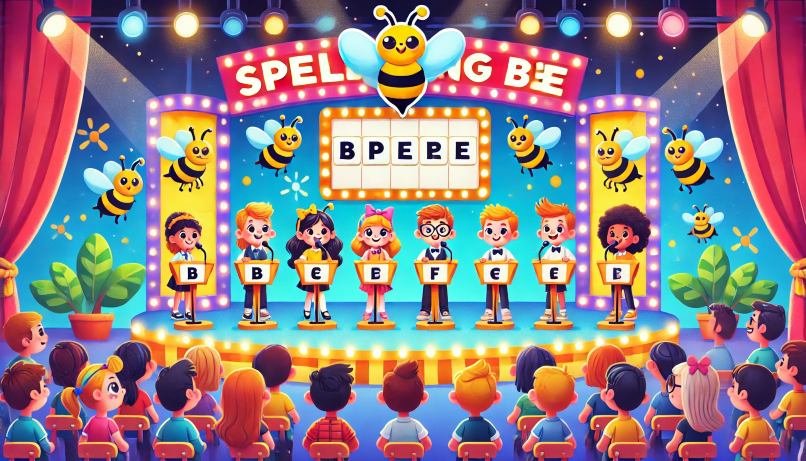
Introduction: The Rise of the Spelling Bee Craze
The spelling bee has evolved from a classroom challenge to a global phenomenon, thanks in part to games like the New York Times (NYT) Spelling Bee. This word puzzle tests players’ ability to form possible words from a set of available letters, with a center letter mandatory in every answer. For enthusiasts, mastering spelling bee answers and analysis is both a skill and an art. In this guide, we’ll decode strategies to boost your score, uncover pangrams, and achieve Queen Bee status—all while diving into the fascinating world of etymology and word patterns.
Table of Contents
Understanding the NYT Spelling Bee Puzzle
The Honeycomb Pattern and Rules
The honeycomb pattern features seven letters: one center letter surrounded by six others. To earn points, players must create words that:
- Are at least four letters long.
- Include the center letter.
- Use letters as many times as needed (e.g., “bee” is valid).
The maximum puzzle score is determined by the total points from all possible words, including pangrams (words using all seven letters).
Scoring Breakdown
- 4-letter words: 1 point
- 5+ letter words: 1 point per letter
- Pangrams: Base points + 7 bonus points (e.g., a 7-letter pangram = 14 points).
The Role of Etymology in Spelling Bee Success
Why Word Origins Matter
Etymology—the study of word origins—can unlock tricky answers. For example:
- Tutu etymology: Derived from French, referring to a ballet skirt.
- Genuine gigue: “Gigue” is a lively dance from the French giguer (to jump).
- Ingenue intuit: “Ingenue” stems from French ingénu (innocent).
Knowing these roots helps decode dictionary words like ennui (French for “boredom”) or equine (Latin equinus).
Common Prefixes and Suffixes
- En-: Often denotes causation (e.g., “entangle”).
- -tion: Indicates nouns (e.g., “solution”).
- -ing: Verbs in progressive form (e.g., “jumping”).
7 Genius Strategies for Spelling Bee Answers and Analysis
1. Start with the Center Letter
Every valid word must include the center letter. Begin by brainstorming prefixes/suffixes around it. For example, if the center letter is “E”:
- E + “ntertain” = entertain
- E + “xample” = example
2. Hunt for Pangrams First
Pangrams are point goldmines. Look for 7-letter words that use all letters. For instance, “genuine” in a puzzle with G, E, N, U, I, N, E.
3. Use a Bee Solver Tool
A bee solver generates possible answers from the day’s letters. Tools like NYT Bee Solver reveal letter answers without spoilers.
4. Analyze Yesterday’s Answers
Reviewing yesterday’s answers uncovers patterns. Did common words like “glint” or unique words like “gigue” appear? Track recent appearances to predict future puzzles.
5. Master the “Bee Jump” Technique
A bee jump means transitioning from basic words to advanced ones. For example:
- Start with “hive” → Find “heaven” → Unearth the pangram “honeycomb.”
6. Leverage the Official Answer List
Post-puzzle, the NYT Spelling Bee releases an official answer list. Compare your results to identify missed words, like 6-letter words or perfect pangrams.
7. Boost Your Average Word Length
Longer words = more points. Aim for 7-letter words and pangrams to climb the percentile ranks.
Advanced Tactics for Queen Bee Status
Cracking the Perfect Pangram
A perfect pangram uses each letter exactly once. For example, “equine” in a puzzle with E, Q, U, I, N, E, T isn’t perfect, but “murmur” (M, U, R) could be if letters are unique.
Decoding the Queen Bee Achievement
To earn Queen Bee status, find every possible word in the puzzle. This requires:
- Memorizing dictionary words like etiquette or ingenue.
- Using hints for last time puzzles.
Tools and Resources for Spelling Bee Mastery
1. NYT Spelling Bee Solver
This tool generates possible answers based on the day’s letters. Input letters like B, E, E, H, I, V, Y to get words like “beehive” (pangram).
2. Etymology Dictionaries
Sites like Etymonline explain tutu etymology or ennui origins, aiding in spelling.
3. Analysis Friday
The analysis Friday feature on forums dissects weekly trends, like rising average word length or frequent letter combinations.
Common Pitfalls and How to Avoid Them
Overlooking Simple Words
Players often skip 4-letter words like “hive” or “jump,” missing easy points.
Ignoring Letter Reuse
Remember: Letters can repeat! “Beeper” is valid even with two “E’s.”

FAQs on “Spelling Bee Answers and Analysis”
General Questions
1. What is a spelling bee?
A spelling bee is a competition where participants spell words aloud, typically in rounds, until a winner is determined.
2. Where can I find spelling bee answers?
Spelling bee answers can often be found on official competition websites, forums, or educational platforms that analyze words from past competitions.
3. Is using spelling bee answers considered cheating?
Using answers during an active competition is cheating. However, reviewing past answers for learning and analysis is a great way to improve spelling skills.
Analysis and Strategy
4. How can I analyze spelling bee words?
You can analyze words by breaking them down into syllables, understanding their etymology, recognizing common spelling patterns, and practicing with similar words.
5. What are some common spelling bee word patterns?
Some common patterns include silent letters (knight, gnome), tricky vowel sounds (receive, leisure), and words borrowed from other languages (bouquet, rendezvous).
6. How do past spelling bee answers help in preparation?
Reviewing past words helps identify trends, difficult spellings, and commonly misspelled words, making future competitions easier to navigate.
Resources and Preparation
7. Where can I find reliable spelling bee word lists?
You can find word lists on educational websites, spelling bee organizations (like Scripps), and online study platforms.
8. Are there tools available for spelling bee analysis?
Yes! There are apps, websites, and books that provide word breakdowns, quizzes, and pronunciation guides to help competitors prepare.
9. How can I improve my spelling bee performance?
Practice regularly, study word origins, use flashcards, take mock spelling bees, and read extensively to enhance vocabulary and spelling skills.
Conclusion: Elevate Your Spelling Bee Game
Spelling bee answers and analysis require a mix of strategy, etymology knowledge, and practice. Whether you’re chasing Queen Bee status or aiming for a genius rank, use bee solvers, study official answers, and embrace the fun of this word game. With these hacks, you’ll crack the honeycomb pattern, master pangrams, and dominate the daily puzzle—one letter at a time.
